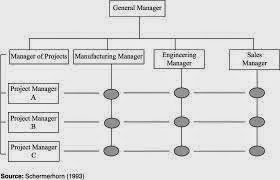Monetary Policy in Developing Countries: The Way Forward
1.
Introduction
Monetary Policy is
concerned with the changes in the supply of money and credit. It refers to the
policy measures undertaken by the government or the central bank to influence
the availability,
cost and use of money and credit with the help of monetary techniques
to achieve specific objectives. Monetary policy aims at influencing the
economic activity in the economy mainly through two major variables i.e. (a) money
or credit supply and (b) the rate of interest.
According to A.J.
Shapiro, "Monetary Policy is the exercise of the central bank's control over the
money supply as an instrument for achieving their objectives of
economic policy."
Monetary Policy is not an
end in itself, but a means to an end. It involves the management of money and credit
for the furtherance of the general economic policy of the government to achieve
the predetermined objectives like Neutrality of money, price and exchange rate stability,
full employment and economic growth.
2.
Monetary Policy Influence in the Market
Monetary
policy influences economic activities in two ways:
i.
Directly
through Money Supply
Money Supply is directly
related to the level of economic activity. An increase in money supply
increases economic activity by enabling people to purchase more goods and
services and vice versa.
ii.
Indirectly
through Rate of interest
A change in money supply
influences economic activity through its impact on rate of interest and
investment. Increase in money supply reduces the rate of interest, which in
turn, increase in investment, and hence promotes economic activity, and vice
versa.
3. The Relationship between money supply and interest rate
Higher
money supply puts downward pressure on interest rates.
Lower
interest rates will also tend to reduce the value of the currency. If UK
interest rates fall relative to elsewhere, it becomes less attractive to save
money in UK banks. We will see an outflow of ‘hot money’ as investors move to
countries with higher interest rates. This will put downward pressure on the
currency as people sell Pounds to buy other currency.
There
is an inverse relationship between interest rate and money supply. Basically
banks increase money supply through credit creation. The liquid cash amount
usually remains more or less constant unless more money is printed through deficit
financing. But deficit finance if resorted beyond specific limit increases
inflationary pressure for which it is kept within tolerable limit by the Govt.To
regulate money supply through bank credit interest rate is used as a mechanism
by the Central Bank. If it wants to pursue a cheap money policy it reduces rate
of interest so that bank credit is expanded and money supply is increased
leading to expansion of economy through investment, if the Central Bank wants
to contain inflation it increases interest rate so that people are encouraged
to save instead of spending more money.
3. Limited Scope of Monetary Policy
in the underdeveloped countries
The
monetary policy has the limited scope in the underdeveloped countries because
of the following reasons.
·
There exists a large
non-monetized sector in most of the underdeveloped countries which act
as a great hurdle in the successful working of the monetary policy.
·
Small-sized and
unorganized money market and limited array of financial assets in underdeveloped countries also hinder the
effectiveness of monetary policy.
·
In most of the
underdeveloped countries, total money supply mainly consists of
currency in circulation and bank money forms a very small portion of it.
This limits the operation of central bank's monetary policy which basically
works through its impact on bank money.
·
The growth of nonbank
financial institutions also restricts the effective implementation of
monetary policy because these institutions fall outside the direct control of
the central bank.
·
In the
underdeveloped countries (e.g., in Libya), many commercial banks possess high
level of liquidity (i.e., funds in cash form). In these cases, the
changes in monetary policy cannot significantly influence the credit policies
of such banks.
·
Foreign based
commercial banks can easily neutralize the restrictive effects of
tight monetary policy because these banks can replenish their resources
by selling foreign assests and can also receive help from international capital
market.
·
The scope of monetary
policy is also limited by the structural and institutional realities of the
underdeveloped countries, weak linkage between interest rate, investment and
output, particularly due to structural supply rigidities. When investment is increased as a
result of a fall in the rate of interest, increased investment may not expand
output due to the structural supply constraints, such as inadequate management, lack of essential
intermediate products, bureaucratic rigidities, licensing restrictions, lack of
interdependence within industrial sector. Thus, higher investment, instead
of increasing output, may generate inflationary pressures by raising prices.
4. Conclusion
The Monetary Policy in an economy works through two main economic variables, i.e., money supply and the rate of interest. The efficient working of the monetary policy, however, requires the fulfillment of three basic conditions (a) The country must have highly organized, economically independent and efficiently functioning money and capital markets which enable the monetary authority to make changes in money supply and the rate of interest as and when needed. (b) Interest rates can be regulated both by administrative controls and by market forces so that consistency and uniformity exits in interest rates of different sectors of the economy. (c) There exists a direct link between interest rates, investment and output so that a reduction in the interest rate leads to an increase in investment and an expansion in output without any restriction. The developed countries largely satisfy all the necessary prerequisites for the efficient functioning of the monetary policy, whereas the developing or underdeveloped economies normally lack these requirements.



Comments